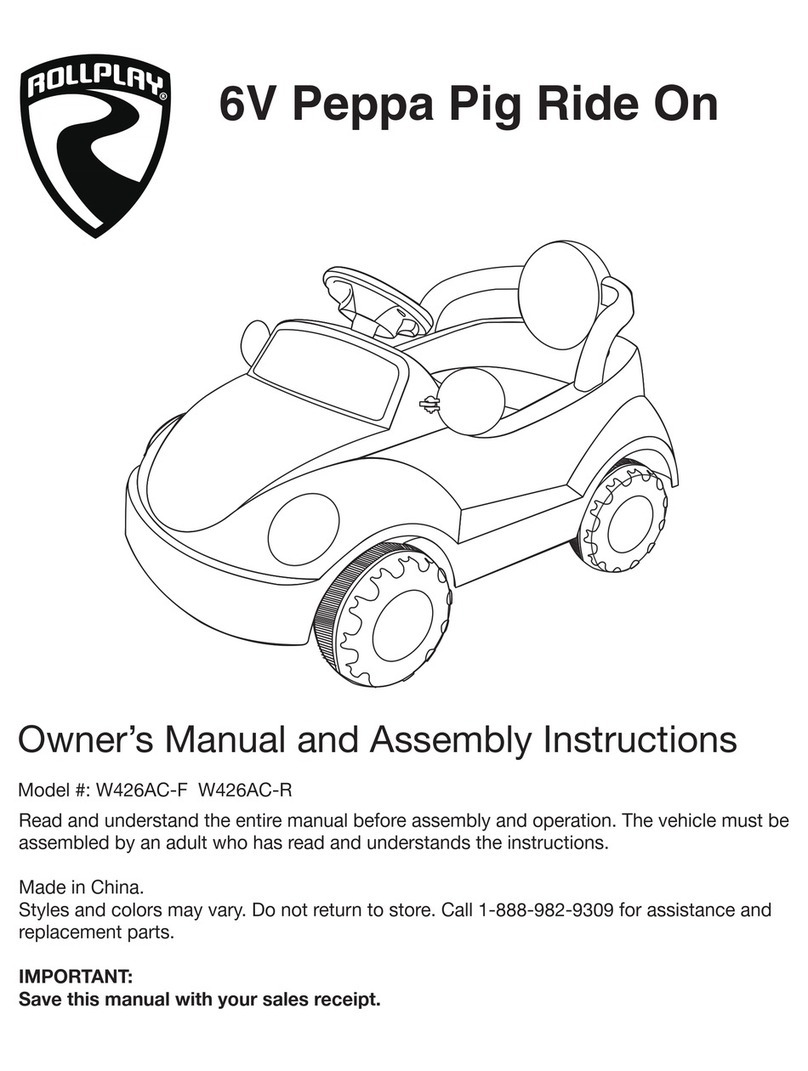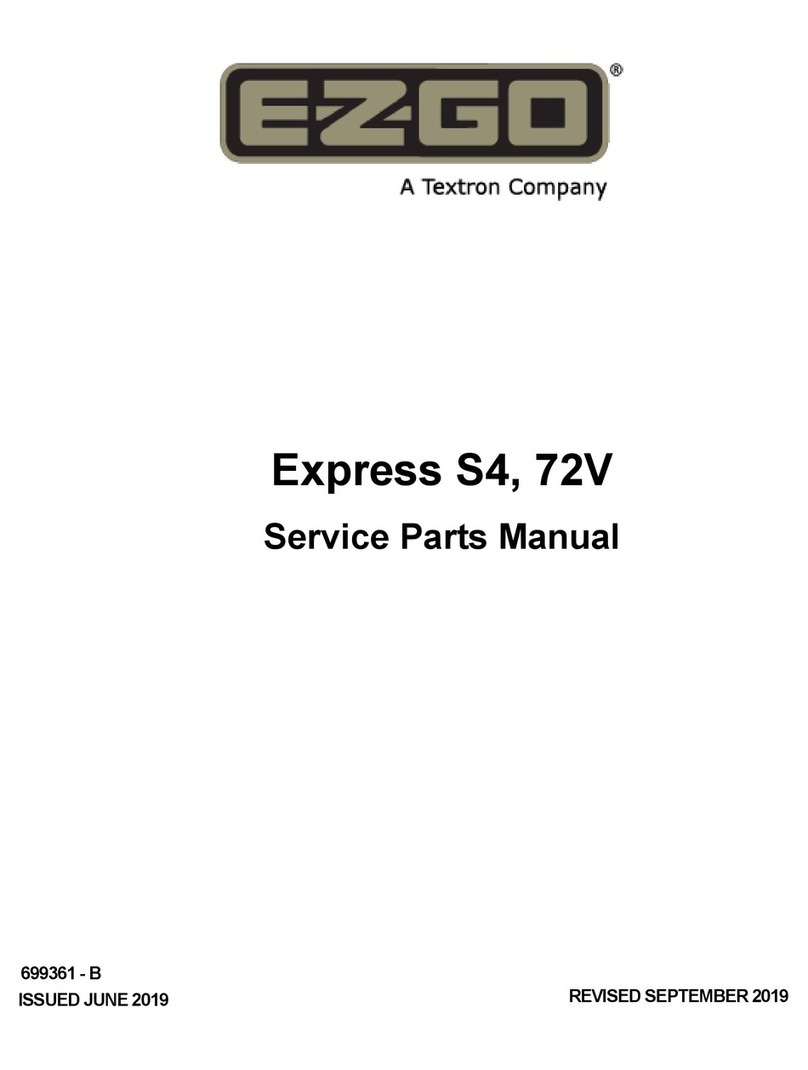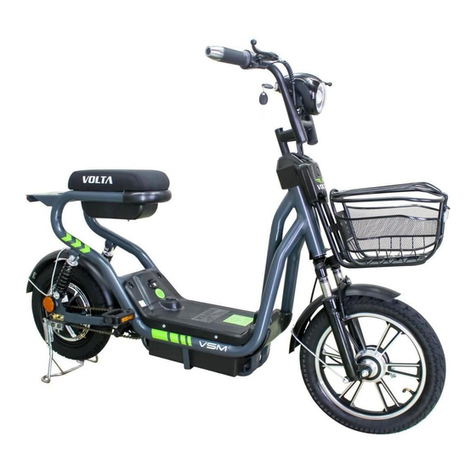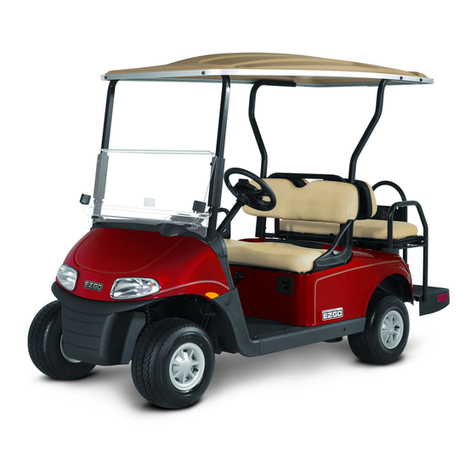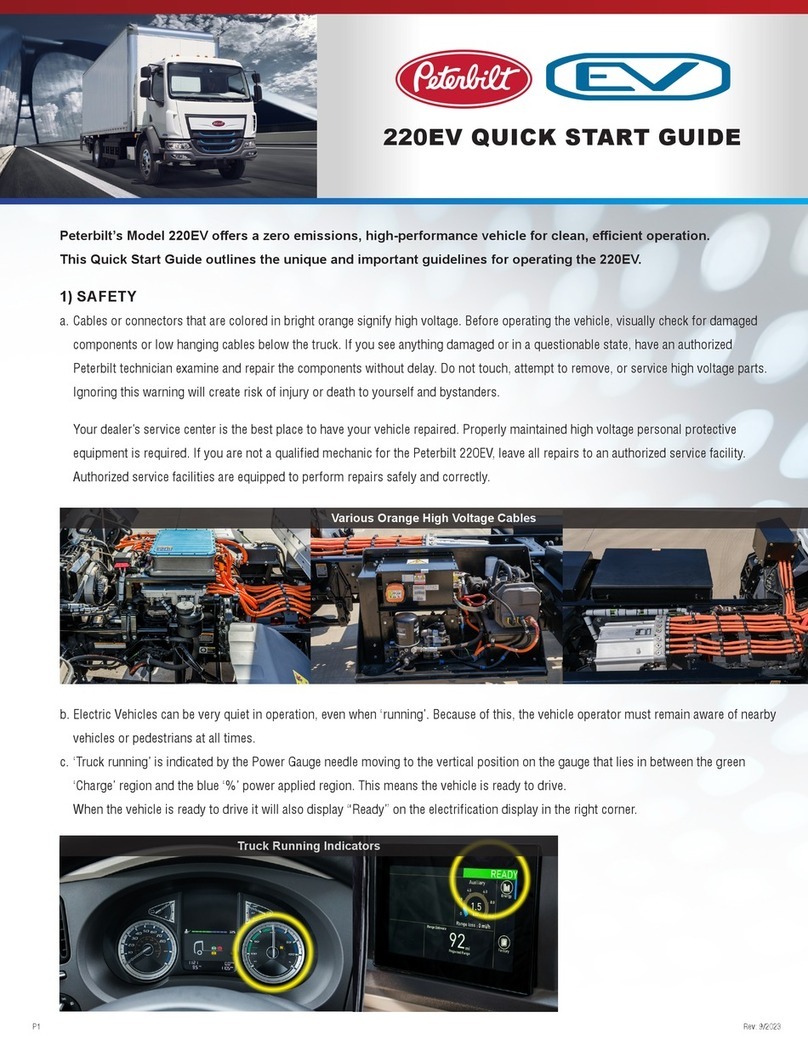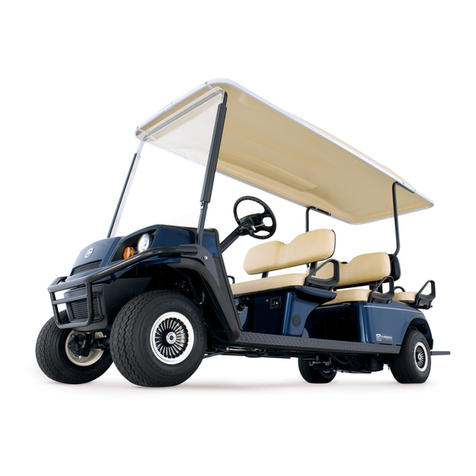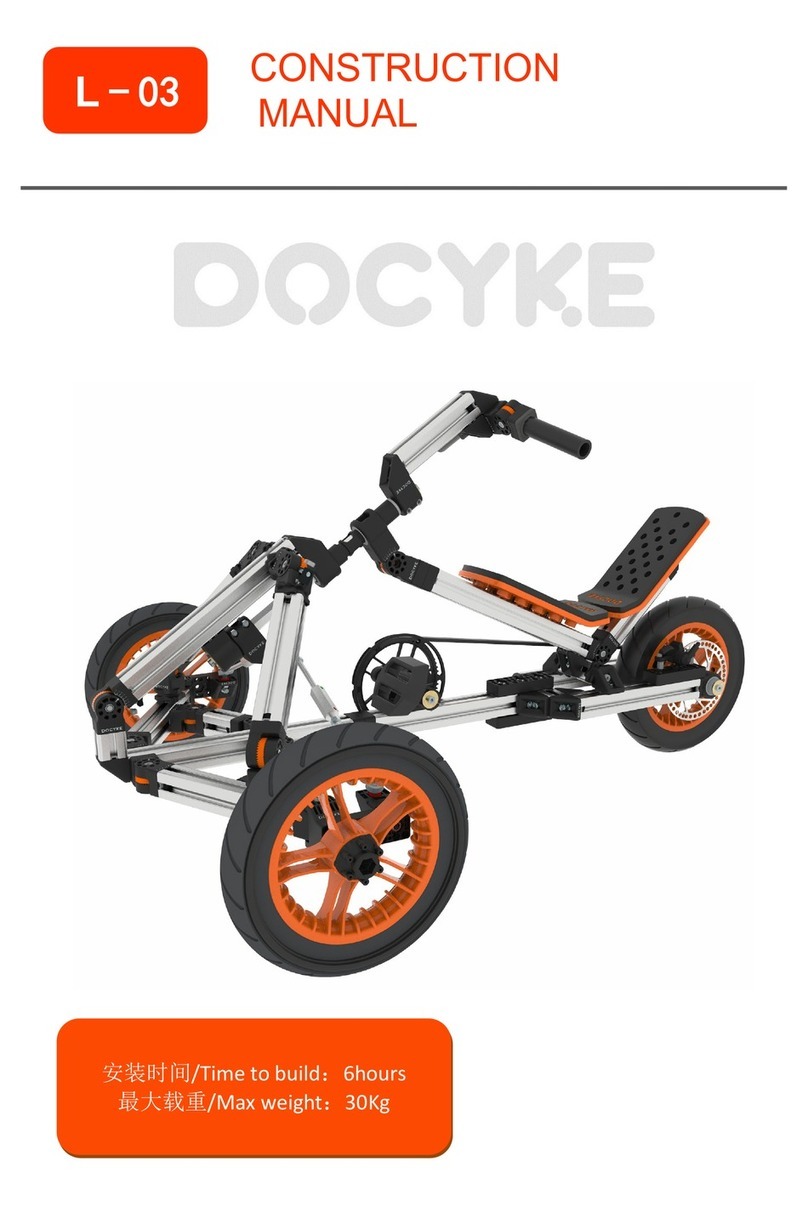
3
Safety Information
This manual has been designed to help the owner/
operator operate the vehicle safely and according to
the procedures and standards for which the vehicle
was designed and intended for use. This section pro-
vides the essentials of safe operation. There is a more
thorough discussion in Appendix A: Industry Stan-
dards.
Training
Vehicle owners are responsible for making certain
that appropriate personnel are fully trained in the safe
operation of the vehicle and understand its charac-
teristics and features, the operation of its controls,
and safe driving practices. Those responsible for
training operators should first become familiar with
the conditions of the place where the vehicle will be
operated in order to assess its eect on safe oper-
ation. Training should occur under the conditions
of the operating environment while adhering to the
safety guidelines and should include:
• Safety guidelines
• Safely operating vehicle in the work environ-
ment.
• Operation of all controls
• Safe driving practices
• A driving and operating test
Operator Qualifications
Operators should be selected based on their ability
to safely operate the vehicle, including vision, hear-
ing, physical and mental capabilities. Operators must:
• Demonstrate a working knowledge of all con-
trols
• Understand all safety guidelines
• Be able to properly drive and park the vehicle un-
der usual working conditions
• Know how to properly load, unload and tow car-
go
• Recognize maintenance problems
Safety Guidelines
All Pack Mule vehicles are designed for use on
smooth surfaces in and around industrial plants,
warehouses, nurseries and greenhouses. They are
not intended for use outdoors, up and down steep
grades, or on public roads and highways.
Follow these guidelines for safe vehicle operation:
• Read this manual before operating the vehicle
• Read, understand and observe all labels axed to
the vehicle
• Do not operate vehicle without first checking the
brakes
• Do not mount or dismount the vehicle when the
key is in the ON position
• Do not drive the vehicle if the accelerator re-
quires excessive pressure
• Do not park or operate the vehicle near flamma-
ble objects or in a flammable or hazardous envi-
ronment
• Use only necessary power
• Keep both hands on the steering control while
operating the vehicle
• Accelerate and decelerate slowly and in a con-
trolled manner
• Always reduce speed when operating on poor
terrain or in poor conditions
• Always maintain adequate distance between the
vehicles, and people and obstacles
• Do not use the vehicle to push objects
• Do not allow the tires to lose contact with the
ground
• Proceed around low overhangs with caution. Be
sure there is enough clearance for the operator’s
head and the highest point of the vehicle or any
attached accessories.
• Never abruptly change direction
• Always drive directly up an incline; never across
• Never exceed the designated load or towing ca-
pacity
On grades, it is possible for vehicles to coast at
greater than normal speeds. To prevent loss of vehi-
cle control and possible serious injury, speeds should
be limited to no more than maximum speed on level
ground.
Good common sense and prudent driving practic-
es do more to prevent accidents and injuries than all
of the warnings and instructions combined. Wesley
International strongly suggests that the owner-oper-
ator read this entire manual paying particular atten-
tion to the CAUTIONS, SAFETY INFORMATION, and
WARNINGS.
Wesley International LLC reserves the right to make
design changes without obligation to make these
changes on units previously sold, and the informa-
tion contained in this manual is subject to change
without notice.
Loading and Unloading
Follow these guidelines when loading and unload-
ing cargo:
• Turn the vehicle o while loading or unloading
• Do not exceed the maximum cargo capacity

